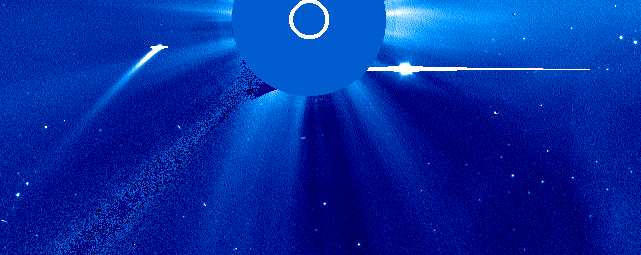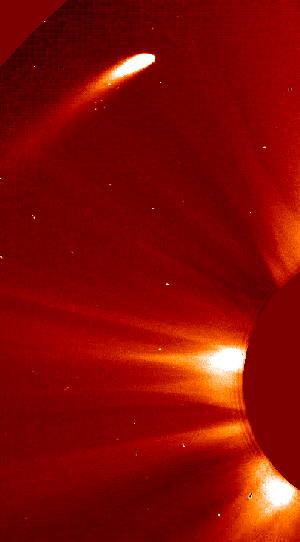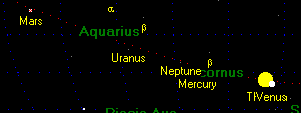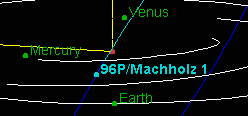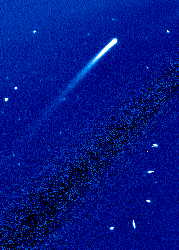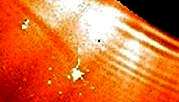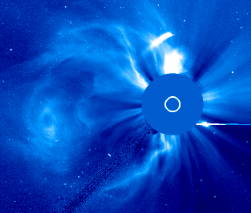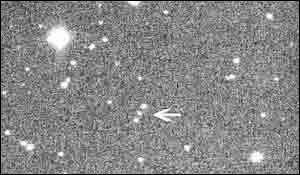.
1/7/02 23:42
BINGO!
SO MUCH FOR STARSHIPS...ALMOST...
[ANOTHER] COMET BORELLY Stunning Comet Close-Ups Released From Fly-By NASA Administrator Sean O'Keefe: He is the author of several journal articles, contributing author of Keeping the Edge: Managing Defense for the Future, released in October 2000, and in 1998, co-authored The Defense Industry in the Post-Cold War Era: Corporate Strategies and Public Policy Perspectives. He is also a member of the Bohemian Club of San Francisco. EDITOR, RE, KREUTZ COMETS: Aren't comets in wide elliptical orbits including Kreutz Comets? So why then do we see them every cottonpickin' time coming in almost precisely at 5:00 or 7:00 relative to the camera plane of the SOHO spacecraft? Hard for me to visualize comets (orbital entities) hanging in one static region in some kind of weird parallel dance with man's latest wee solar-satellite also with unique orbit. FEEDS HAVE BEEN UNRELIABLE, seem to be working now, 1/7/02 7:30 AM PST Movie: http://lasco-www.nrl.navy.mil/rtmovies.html Navy Raw http://lasco-www.nrl.navy.mil/java/lastC3.html THE VERY LATEST SOHO IMAGES http://sohowww.nascom.nasa.gov/data/realtime-images.html Space Preservation Act of 2001 (Introduced in the House)
WILD SYNCH NOTE: QUADRANTIDS - The first annual shower peaks only two days after New Years Day. It's parent source is comet 96P/Macholz. ASTEROID 2001YB5 INCOMING JAN 7 |
|||||||||||||||
UPDATE: DEEP IMPACT Arecibo Asteroid Radar Project Gets One Year Reprieve. EDITOR, events such as this might be why: 2001+YB5 [2] size: H (absolute magnitude)20.220 210 m - 470 m ORBIT SIMULATION Wonder if we'll see it on SOHO? YB5 FLYBY 2002 01 07.1 11 02.49 -42 52.1 0.0058 2002 01 07.2 12 28.84 -53 40.4 0.0055 2002 01 07.3 14 34.37 -58 35.1 0.0057 2002 01 07.4 16 25.37 -56 00.1 0.0065 2002 01 07.5 17 32.60 -50 36.1 0.0076 2002 01 07.6 18 11.27 -45 27.3 0.0089 BBC: Space rock hurtles past Earth
DID IT ALL HAPPEN AT ONCE?
|

